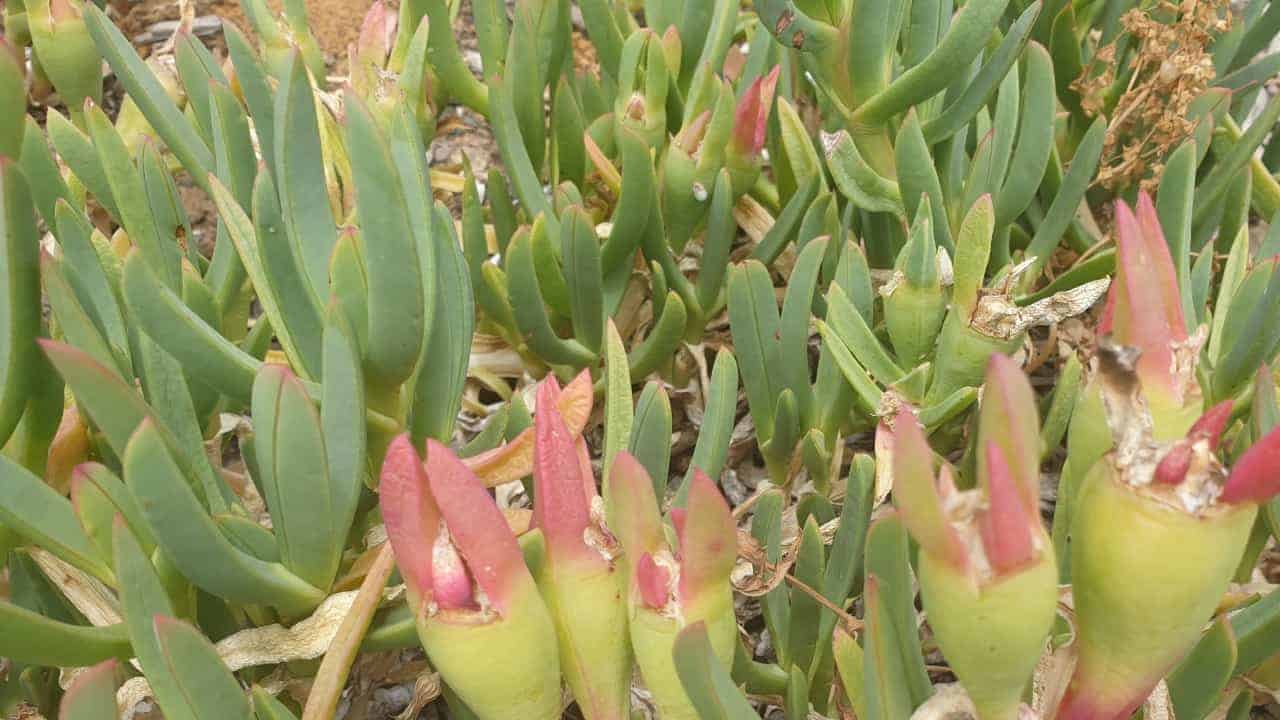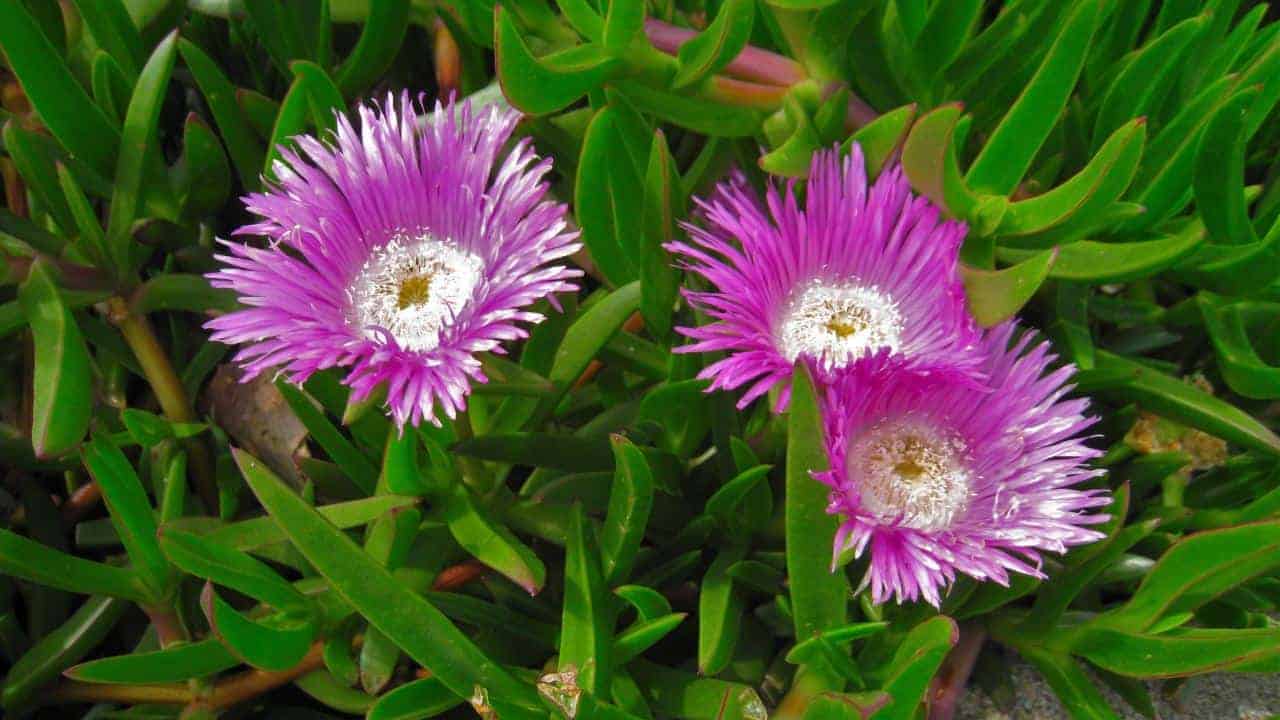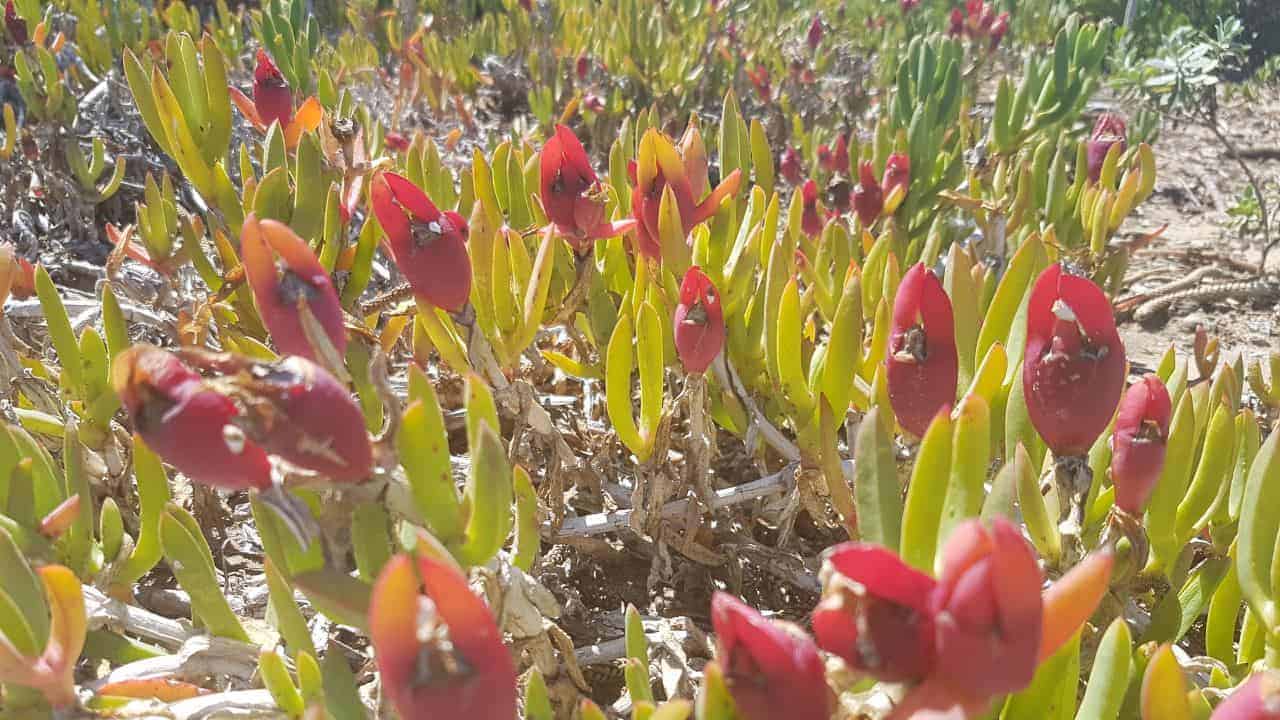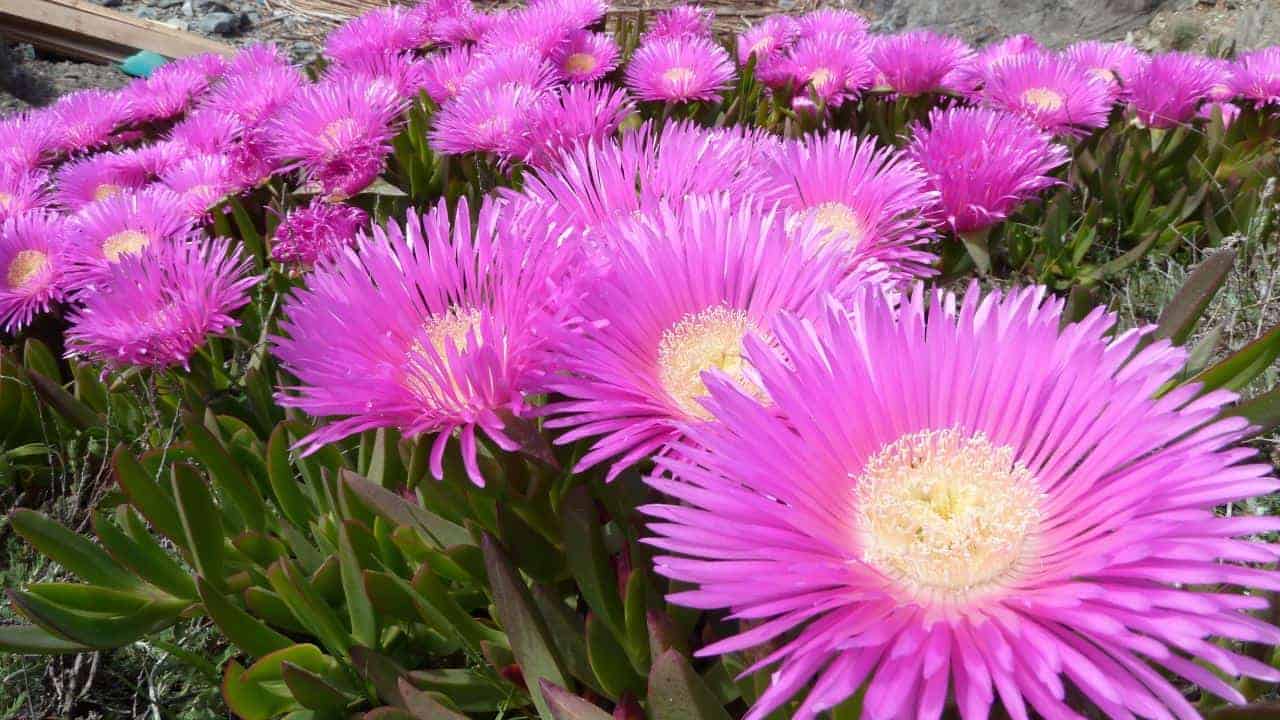Karkalla
Carpobrotus virescens (Bain)
Carpobrotus rossii (Karkalla)
Aboriginals traditionally ate the Karkalla’s fruit fresh and dried, and paired the salty, fleshy leaves with meat. Also known as “bain” or “pigface” (in WA), this ground-covering bushfood succulent is native to coastal regions in Western Australia, South Australia, Victoria and Tasmania.
The fruit of the Karkalla grows to about the size of a grape, and turns a deep red when ripe. To enjoy them fresh, just hold one end and suck out the sweet pulp, or eat it whole — salty skin and all. Cooked, they may be used in jams, jellies, or paired with seafood in savoury dishes but Round Baby Pigface has tastier leaves. The leaves can be pickled, as well as used like aloe vera to remedy stings, burns and skin irritations. Karkalla extracts have been shown to possess significant antioxidant, antiplatelet and anti-inflammatory activity.
Karkalla blossoms in the Spring and Summer with brilliant fuchsia petals and cheerful yellow centres. Following pollination, the fruits remain when individual flowers die off, their red-pink hue making them easy to spot amongst the green succulent leaves. Simply pluck the fruit to harvest.
This coastal succulent tolerates both drought and salt, and is somewhat frost-resistant. It prefers full sun, but will grow comfortably in part-shade. Choose a well-drained soil, from clay loam to sandy, and water occasionally during the hottest summer months if you want the leaves to keep their rich colour.
Karkalla grows low, barely reaching half a metre in height, but can spread to 3 metres wide. It’s a great groundcover or border plant for courtyards, poolsides, Mediterranean gardens, and succulent, desert and beach motifs, and the perfect choice for a low-maintenance verge plant.
Aboriginal name(s):
- Bain (Noongar)
- Janga (Wajarri)
Do I need to fertilise my Karkalla plant?
No, as a coastal plant, Karkalla is well-adapted to poor, sandy and dry soils. However, a handful of organic fertiliser (eg. worm castings) every now and then can offer great results in a home garden.
Can I forage for wild Karkalla instead of growing my own?
No. Although Karkalla is plentiful in the wild, this plant is an ecosystem supporter, helping to stabilise sandy terrain, while feeding native birds and insects. What’s more, the act of foraging can be damaging in itself, harming other native species through accidental trampling or ground contamination.
What pests is Karkalla susceptible to?
Snails and slugs, which can be remedied with beer traps. Occasionally cottony cushion scale, which can be treated with horticultural oil.
Why is my Karkalla turning brown and dying?
Succulent turning brown can be a sign of overwatering. This is likely to happen if your plant is growing in a medium that doesn’t drain quickly enough, leaving the roots to rot in the excess water. Try watering less frequently, moving your plant to a sunnier position, or repotting your plant with a sandier soil.

Suitable for full-sun
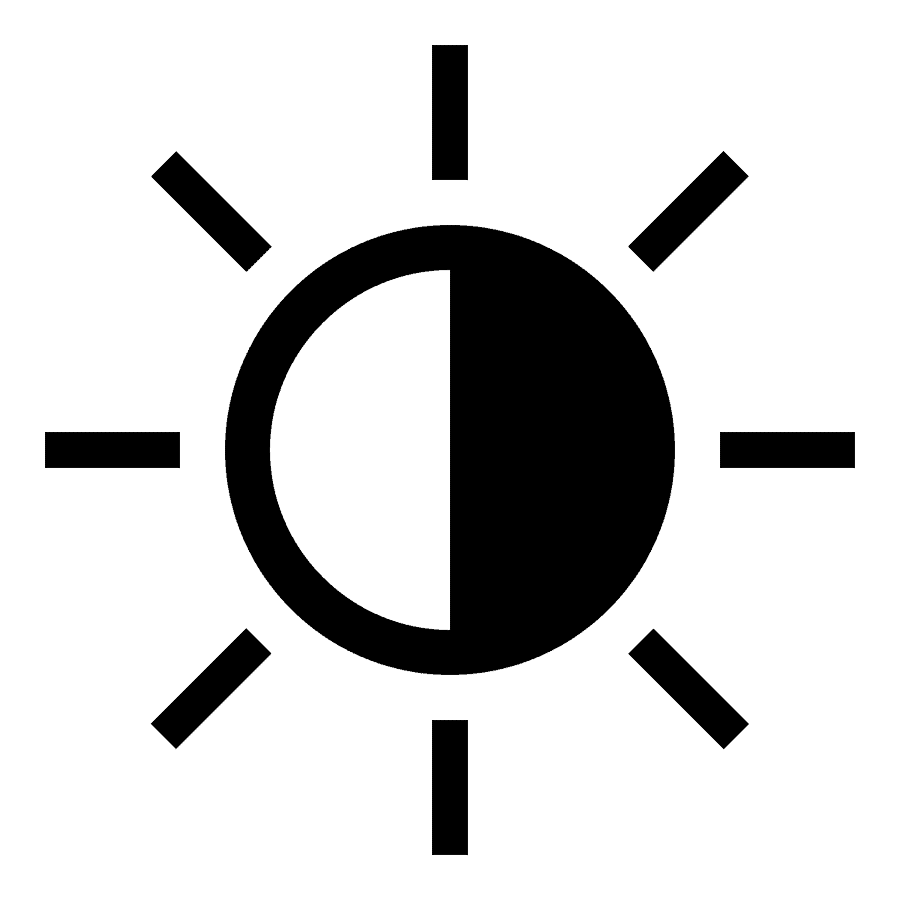
Suitable for part-shade

Suitable for pots
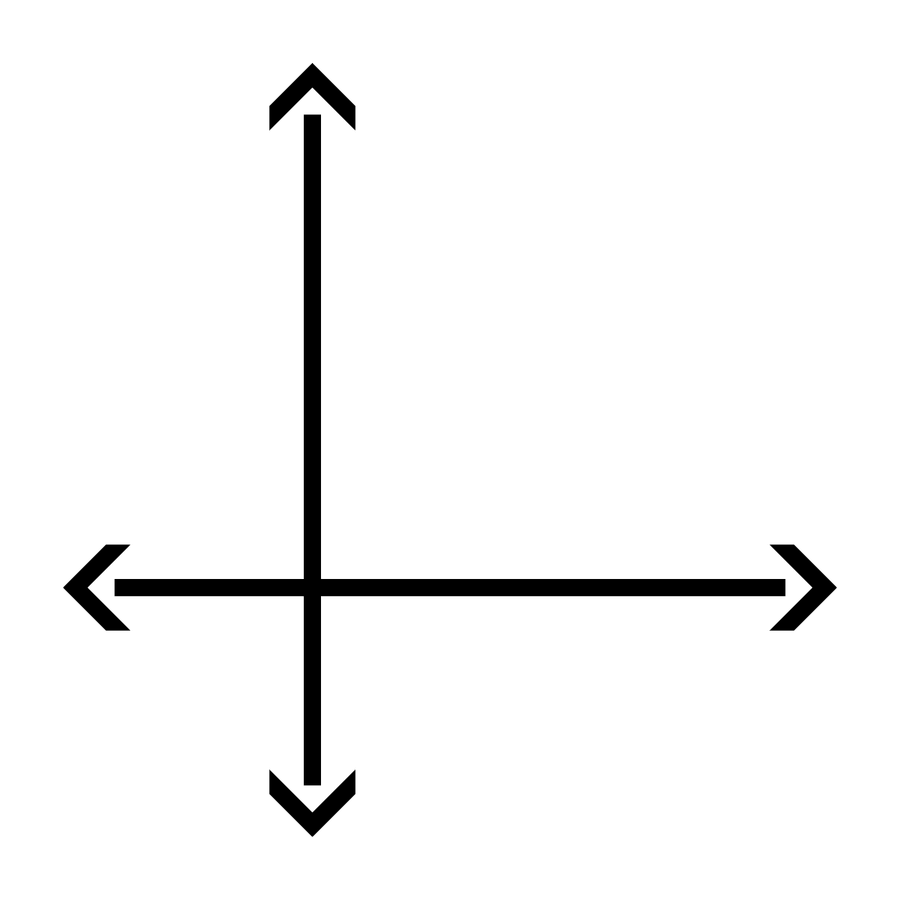
Dimensions:
Height 0.3m
Width 3m

Tolerates drought

Tolerates sandy soils

Tolerates salt

Fruits from:
Year 1 onwards

Bird attracting

Attracts bees & insects

Attracts lizards

Suitable for gaps

